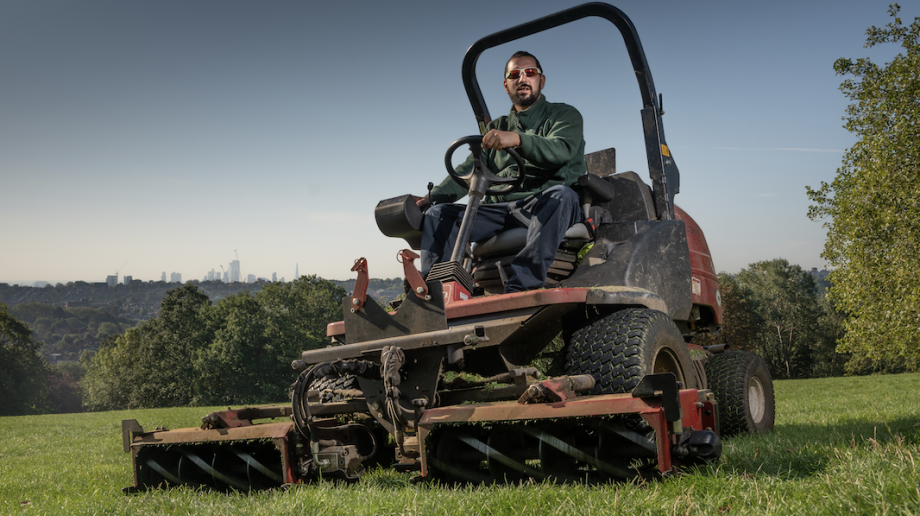
Preparing your green spaces and outdoor areas
As spring progresses, schools should review their green space maintenance and management plans to understand which works should be taking place over the next quarter, so that outdoor areas remain safe and healthy spaces to use
Written by British Association of Landscape Industries
The last 12 months have seen green spaces of all sizes act as sanctuaries and a means of escape from the COVID pandemic and associated restrictions on movement. Parks and gardens represented one of the few places individuals were able to meet friends and family when restrictions permitted, and attendance of schools represented a return to normality for young people.
Many educational centres have promoted the use of green spaces and encouraged their use as outdoor teaching areas. Such spaces are likely to have higher volumes of visitors and increased use, particularly as the weather improves and movement restrictions ease throughout the year. Now is the time to begin making sure these areas are ready and safe for use.
Social distancing
Regardless of seasonal maintenance, consideration should be afforded to pedestrian traffic and movement in accordance with social distancing guidelines. Close attention should be given to ‘pinch points’ at entrances and exits, using appropriate signage with movement guidance as reminders. There may be the need to consider the use of marshals, stewards, or their equivalents at busy times of the day and in popular areas. This should all be considered in the production of a risk assessment in line with each of the areas that are being used.
If there is an expectation of increased volumes of people using premises, a range of measures may need to be considered. For example, pathways could be widened to allow people to safely pass each other. This can be achieved by close mowing strips on either sides of paths or using longer grass to separate spaces and routes.
A one-way system could be created, reminding people to follow the signage, and be aware of alternative routes if restricted entrances have to be closed.
Temporary paths could be introduced to reduce pedestrian numbers. Obstacles (for example, planters) which may hinder social distancing guidance, could be removed.
Schools could consider putting in place hygiene stations where people can access facilities to wash their hands.
What’s more, schools could introduce time-tabling the use of areas and staggering times of access to reduce numbers, as well as marking out designated areas for users.
If the areas contain sports facilities and playgrounds, the government has produced specific guidance for managing these facilities.
The increase in the use of these areas is inevitably going to bring the need for additional and more regular maintenance, including the hygienic cleaning of these areas, including touch points, on a regular basis and the potential increase of litter. This should begin with reminding people to respect other people and protect the natural environment.
Review green space maintenance
As spring progresses, managers should review green space maintenance and management plans to review which works should be taking place over the next quarter, to ensure green spaces remain safe, healthy spaces to use.
Grass cutting should be underway with mowing heights set to reflect weather conditions and pedestrian traffic levels, particularly if the pattern of drier springs and summers continues.
Consideration may need to be given to applying a weed, feed and moss killing regime on lawns that are particularly infested and may begin with the warmer weather.
Areas of turf that have become worn or damaged may be replaced during the early season to encourage new growth more resilient to potentially higher volumes of pedestrian traffic. Seed or turf may be used, depending on the desired speed of recovery, budget, and maintenance available.
If there are large areas of thatch or areas of the lawn that have been compacted, consider aerating to improve drainage and reduce thatch.
Plant and shrub growth will need to be checked and cut back appropriately if it is overhanging walkways, cars parks or obscuring lines of sight for vehicles and pedestrians on the property, as well as allowing pedestrians to safely pass one another.
Perennials and ornamental grasses can be cut back, along with specimen plants grown for winter stems, and summer-flowering shrubs should be pruned in the spring to encourage new growth and flowering, together with the correct form. The removal of dead, diseased or dying growth may also be undertaken during this period. Pruning activities carried out after March must only be carried out after a check for nesting birds.
Mulch may be applied to beds to supress weed growth and help retain moisture or cultivated by hand where time allows.
Remove and replace any plants, shrubs or trees that have died during winter with an appropriate choice.
Plant specimens with spring colour interest such as Primroses and Bellis for instant colour and add summer bulbs for additional colour throughout the summer.
Check for early signs of pests and disease and control with a method appropriate to the site.
Check irrigation systems are in working order, with no leaks or blocked nozzles.
Playground equipment
Playground equipment and surfacing should be checked on a regular basis in line with risk assessment and manufacturer guidance. This is likely to include visual checks for signs of damage and wear and tear, along with a tactile test. Timber play equipment should be checked for cracks and anything exceeding 8mm should be reported. Moving parts should be checked and lubricated as necessary. Make sure the safety surface areas are clear of debris and trip hazards and check for sign of wear and tear and replace as needed. A professional inspection should take place at least once a year. If serious defects are detected, then equipment should be immobilised and repaired as soon as possible.
Also, care needs to be given to regular cleaning and monitoring of use in line with government guidance concerning numbers, signs, and social distancing when in use.
A BALI registered company that specialises in grounds maintenance will create a bespoke maintenance plan and carry out the maintenance all year round for your green space. Search for members in your area on the website below.
Further Information:
Latest News
14/11/2025 - 11:04
England’s councils are warning of a "ticking time bomb" in the special educational needs and disabilities (SEND) system, with new data showing deficits that could bankrupt local authorities within three years.
13/11/2025 - 12:14
Event for school leaders, governors and education professionals relocates to the historic Old Billingsgate venue in London.
13/11/2025 - 09:49
The regulations have been set following a second consultation and detailed collaborative working with organisations and people across deaf and hearing communities.
13/11/2025 - 09:39
The Education Committee has published a letter to the Secretary of State for Education asking for more detail about the Department for Education’s work on developing its SEND reforms.
13/11/2025 - 09:26
New analysis by NFER has highlighted the uneven distribution of pupils with special educational needs and disabilities (SEND) across mainstream schools in England.







